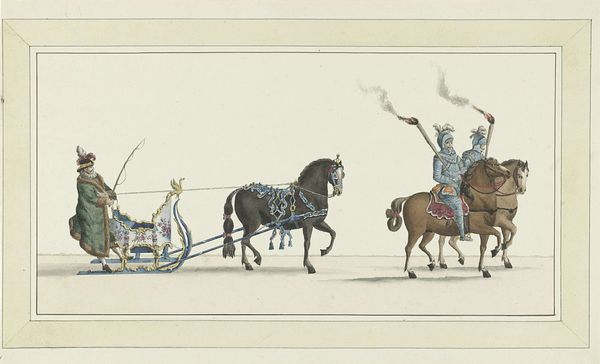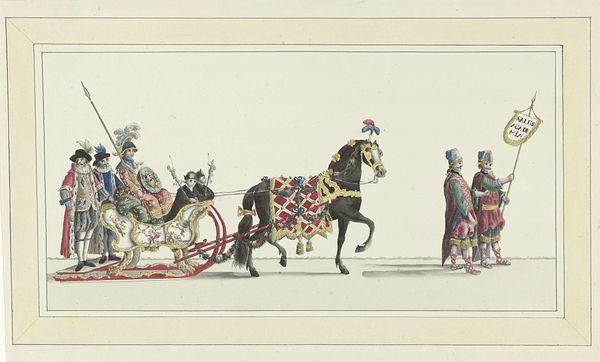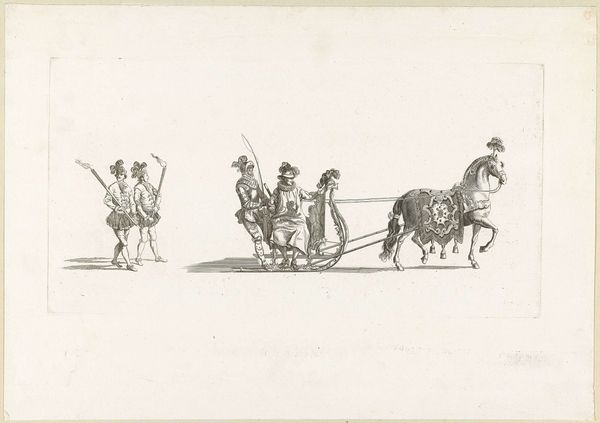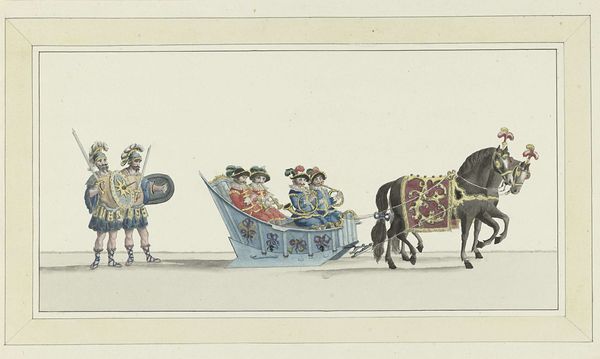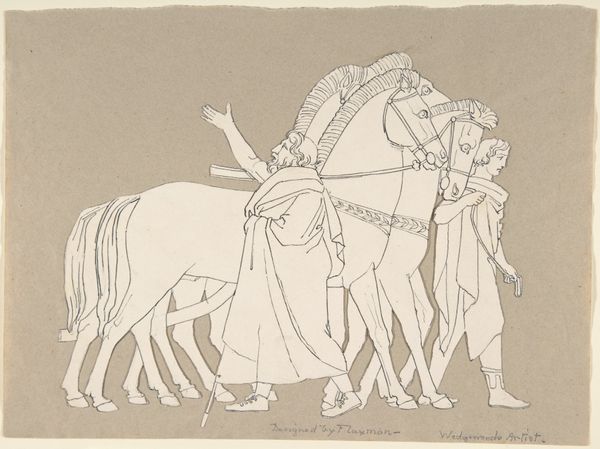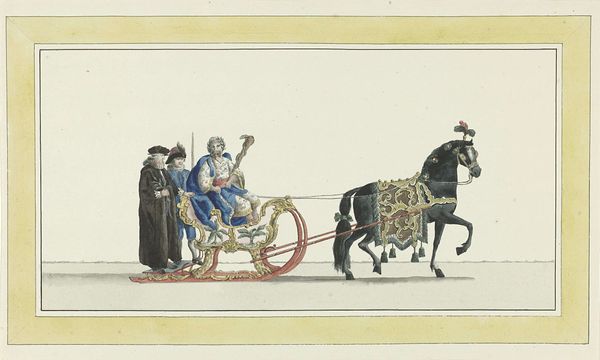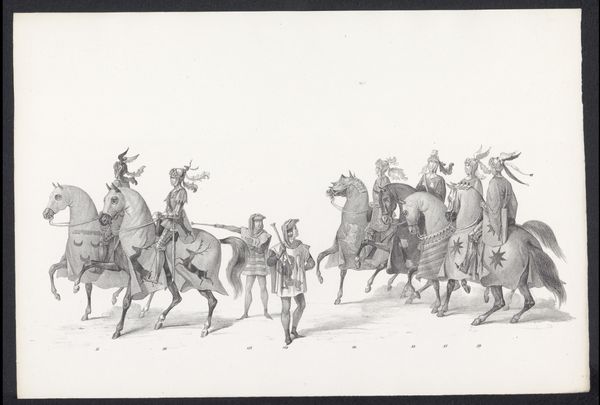
Dimensions: height 310 mm, width 510 mm
Copyright: Rijks Museum: Open Domain
Curator: Welcome. Here we have Abraham Delfos's "Derde slede," or "Third Sled," an ink, pencil, and watercolor drawing on paper, created in 1776. It's currently part of the Rijksmuseum collection. Editor: Immediately, I’m struck by the somewhat flattened perspective, creating a theatrical tableau rather than a realistic scene. The limited palette lends it an air of historical distance, like a faded tapestry. Curator: Indeed. It's worth noting Delfos worked during the rise of Romanticism, a movement that celebrated the past, and often employed historical genre painting and narrative. The technique involves delicately layering ink washes, evident when closely studying the costuming details. Editor: The formal symmetry reinforces this idea of tableau. Note the placement of the torchbearers mirroring each other. And the rhythmic curve of the sleigh supports adds to the overall elegance. Curator: The drawing provides insights into the societal customs of the time, offering a glimpse into the festive celebrations. The sleds themselves are elaborately decorated. This scene alludes to specific events—namely, winter celebrations. The presence of guardsmen and a ceremonial sleigh also signifies elite indulgence and display. Editor: Note also the composition, which invites close consideration of class. While ostensibly this work centers around noble members sitting inside of a decorative sled, the servants flanking both sides create both spatial and symbolic balance to the overall form. Curator: Very true. It is hard to escape the sense that Delfos is concerned about recording a particular visual form while simultaneously documenting a mode of expression associated with elites. I agree with your claim on its spatial balance of representation. Editor: By carefully deploying linear configurations of forms against large swaths of empty space, this technique, rather counter-intuitively, works towards achieving maximal expression. Curator: It's fascinating to see how Delfos blended technique with narrative. And yes, as you point out, its self-conscious theatricality contributes to a distinct and refined aesthetic. Editor: Absolutely. Delfos captures an intersection of social history and artistic form. The sum product of these elements leads to a beautiful depiction that represents so much more than just meets the eye at first glance.
Comments
No comments
Be the first to comment and join the conversation on the ultimate creative platform.
